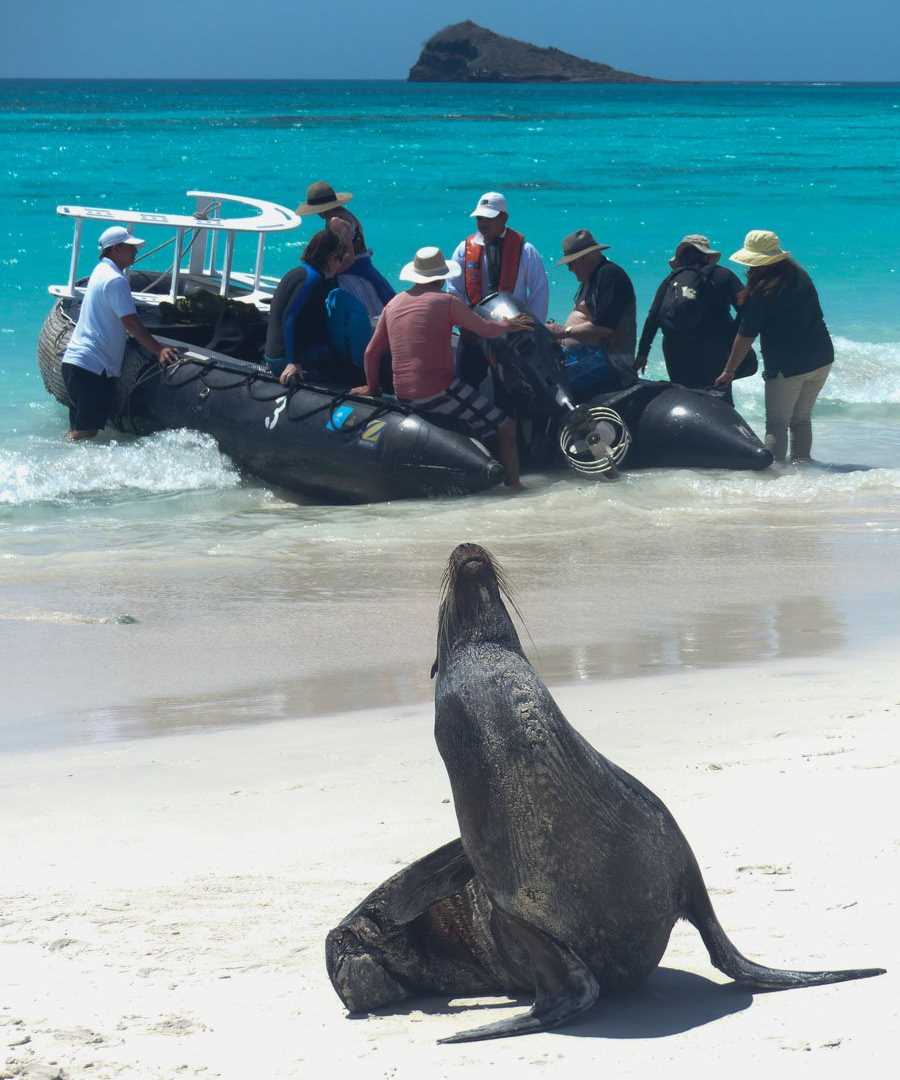Our first jump into the east Pacific Ocean occurred mid-morning. Our guests had already received a safety briefing from our expedition leader, Paula, and the natural history staff helped to get everyone outfitted for snorkeling gear, and so out the door we went – to adventure!
The water is getting chilly (low 70’s F; low 20’s C); but the fish sightings…fabulous! King angelfish, streamer hogfish, butterflyfish, damselfish, surgeonfish; however, the stars of the show were definitely the five juvenile sea lions who dashed by at great speed, made sharp turns, blew bubbles, and in general entranced all of us with their elegance and dexterity.
This is the southeastern-most island, and one of the oldest and most isolated. Due to the direction of the winds and ocean currents, species that successfully arrived (by floating, swimming or flying), found themselves isolated for the next few millennia. Enough time for genetic drift, mutations and natural selection to have worked on their genetic make-up, with the result being organisms unique to this island alone.
Late morning we all met up on a long, white-sand beach where we could warm up, wander at will, and photograph photogenic sea lions rolling or sleeping or playing in the shallow surf.
The afternoon was spent on the far western-most point of land, known as Punta Suarez. A long, very rocky trail established by the Galápagos National Park Service that makes a giant loop and allows us to see the highlights of that particular and unique location, including the albatross! Galapagos waved albatross to be specific, in couples, preening, sleeping, courting, incubating eggs, flying overhead. This is the only island in the archipelago where the Galapagos waved albatross can be found. The steep bluff facing the southeast trade winds are thought to be the attraction, allowing adults and juveniles alike the possibility of flight with effortless ease… by jumping off a cliff!
Red-billed tropicbirds, swallow-tailed gulls, blue-footed boobies, and the Nazca boobies were all present as well as the Española marine iguana with its red flanks on black background, the Española lava lizards, females with bright red throats, and the ever-present Galapagos sea lions, inland a surprisingly long distance!
A surprise visit by a Galápagos hawk, just a few feet away from us was awe-inspiring. And don’t forget the smaller feathered denizens: three species of Darwin’s finches (small-beaked, grey warbler and large cactus), Española mockingbirds and Galápagos doves.
All this and perfect weather on top! Stupendous first full day in Galápagos!







